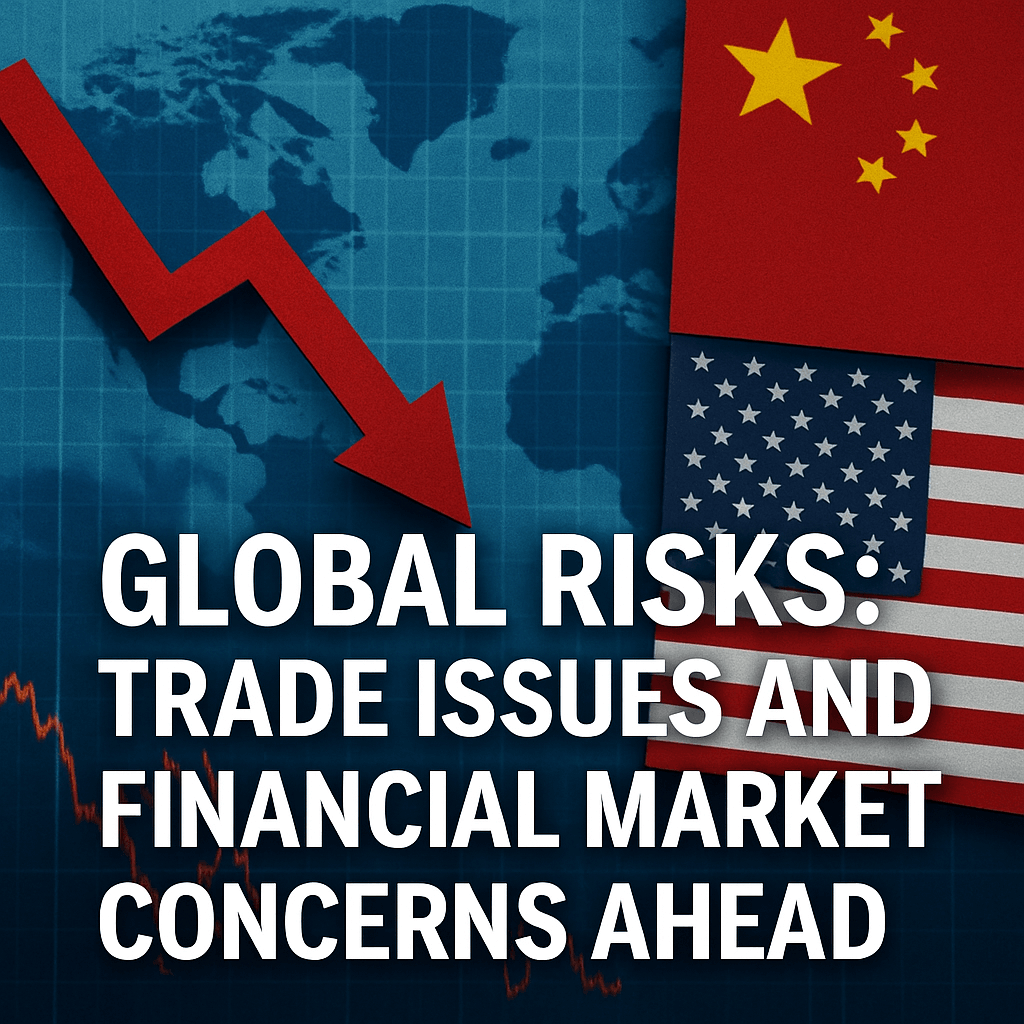Global Risks: Trade Issues and Financial Market Concerns Ahead

Introduction
Markets have largely moved past headline-grabbing tariff threats, but a deeper, more systemic risk is building: a US Treasury yield crisis. As Washington’s debt burden crosses the $34 trillion mark, investor confidence in Uncle Sam’s borrowing capacity is fraying. Without swift policy adjustments, the next global risk shock may originate not from trade wars but from strained sovereign debt markets.
The Legal Check on Tariffs Shifts Focus to Debt
In a landmark decision, the US Court of International Trade ruled that the President’s emergency powers do not allow unilateral imposition of sweeping tariffs on major trading partners. While the administration has appealed, the ruling curbs expectations of broad new levies.
“Tariffs made headlines, but due to the TACO (Trump Always Chickens Out) trade theory, they no longer drive asset prices,” says Nigel Green, CEO of deVere Group.
Equity indices have held up, the US dollar has stabilized, and volatility indexes have receded. But under the surface, a dramatic surge in Treasury issuance is straining global demand for US paper.
Mounting Supply Meets Waning Demand
Washington’s financing needs have exploded due to persistent budget deficits, fiscal stimulus measures, and rising interest obligations. Key technical points:
- Record Issuance: The Treasury plans to issue over $10 trillion in new securities in the 2023–24 fiscal year—an unprecedented level compared to the $4–6 trillion range in prior cycles.
- Bid-to-Cover Ratios: May’s 10-year note auction saw a bid-to-cover of 2.2x, the weakest in six years, signaling tepid demand among primary dealers and offshore investors.
- Yield Curve Steepening: The 2-10 spread has surged past 130 basis points, reflecting both higher term premia and concerns over future Fed policy normalization.
Technical Specifications of Treasury Auctions
- Primary Dealer Obligations: Dealers are required to absorb unsold allocations but have become increasingly selective, passing up larger allotments.
- Foreign Participation: Non-resident holdings of Treasuries slipped to 29.5% of total debt in Q1 2024, down from 32% a year earlier.
- Debt Ceiling Dynamics: The recent debt‐limit suspension expired in January 2024, reintroducing the risk of technical default if Congress delays a new raise.
Global Ripple Effects of Rising Yields
A steepening of US yields has broad implications:
- Corporate Borrowing Costs: Investment-grade and high-yield spreads will widen, raising funding costs for non-financial corporates.
- Emerging Markets Strain: Many EM nations peg or reference their own bond yields to US Treasuries; steeper curves exacerbate sovereign refinancing risks.
- Credit Valuation Adjustments: Banks and insurance firms holding long‐dated US paper will face higher CVA charges, pressuring profitability.
Historical Precedent: Lessons from the Early 1990s
In 1994, the US experienced a “Great Bond Massacre,” when the Federal Reserve unexpectedly hiked rates, pushing 10-year yields from 5.5% to over 8%. That shock pummeled stocks and sent mortgage rates soaring. Today’s context differs—supply‐driven inflation in Treasuries rather than Fed surprise—but the market mechanics are similar:
- Supply Shock: Then, Fed balance‐sheet reduction; now, fiscal deficits.
- Liquidity Constraints: Modern regulatory capital rules have reduced dealer inventory, amplifying price moves.
Policy Implications and Options
To avert a full-fledged bond market revolt, US policymakers face difficult choices:
- Debt Ceiling Negotiations: An expedited, multi‐year suspension could reassure investors.
- Fiscal Consolidation: Entitlement reform and targeted spending cuts could slow debt growth.
- Fed Coordination: A temporary Treasury-Fed repo facility could backstop liquidity in stress episodes.
Expert Perspectives
IMF Chief Economist: “US debt dynamics pose a medium‐term risk to global financial stability. Coordination between fiscal and monetary authorities is essential.”
Moody’s Analytics: Recent models indicate a 200 bps rise in 10-year yields could knock 1.5% off global GDP growth over one year.
Conclusion
With blanket tariffs restrained by the courts, Washington may double down on fiscal measures ahead of elections—potentially exacerbating the debt surge. The bond market, unlike a trade dispute, is unforgiving and has no off‐ramp. As Nigel Green warns:
“The danger now isn’t a trade war. It’s a bond revolt.”